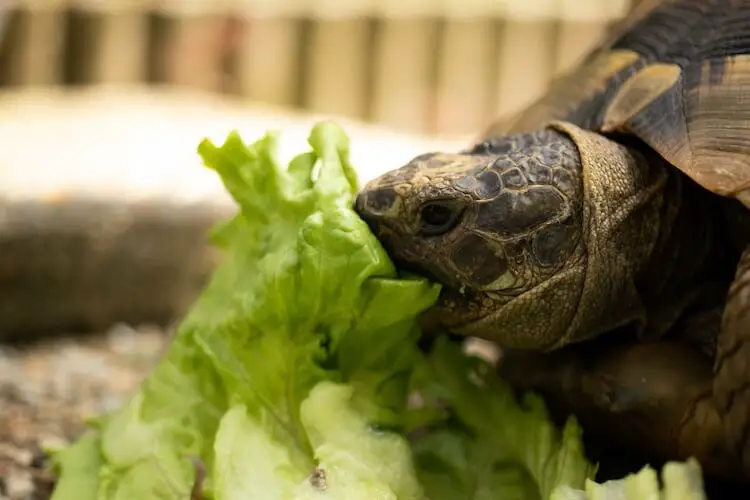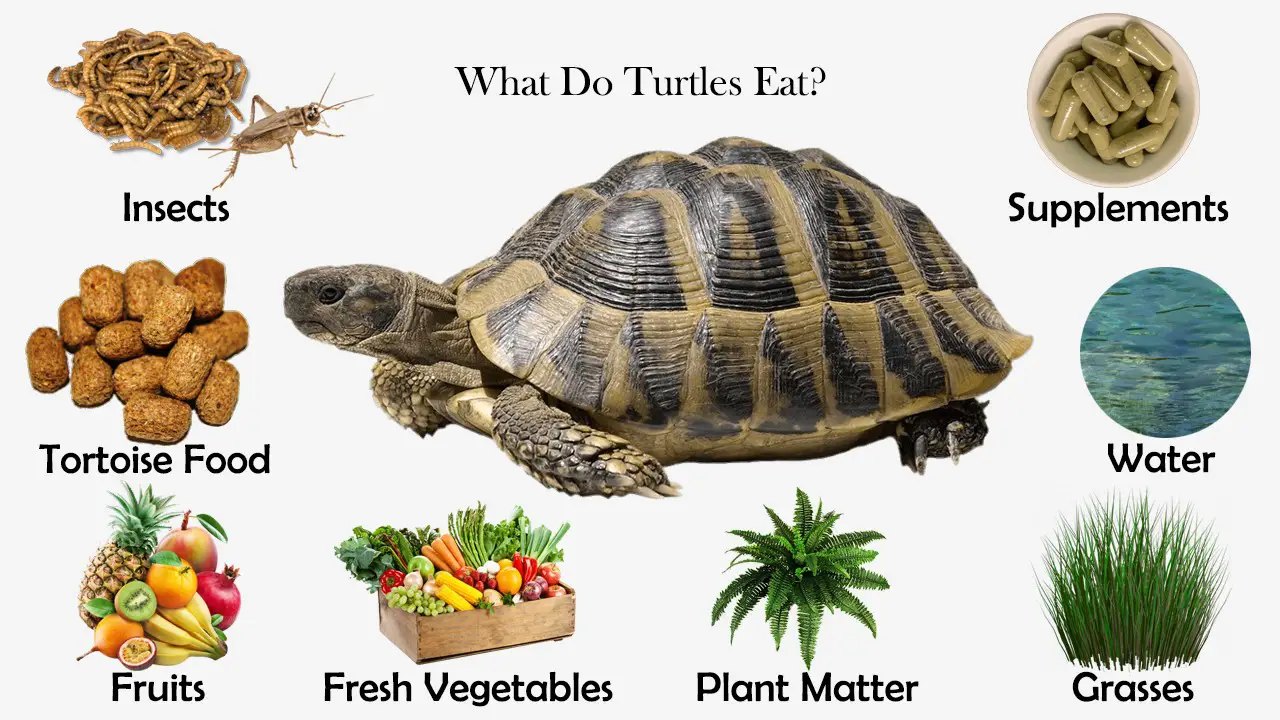Turtles are fascinating creatures that have been around for millions of years. They come in various shapes and sizes, and their diet plays a crucial role in their overall health and well-being. In this article, we will explore the question, “What can turtles eat?” and provide you with a comprehensive guide to turtle nutrition. Whether you are a turtle owner or simply curious about these amazing reptiles, this article will provide you with valuable insights into their dietary needs.

Understanding Turtle Nutrition
Turtles are omnivorous creatures, meaning they eat both plant and animal matter. However, the specific diet of a turtle depends on its species, size, and habitat. It is essential to provide turtles with a balanced diet that meets their nutritional requirements. Let’s delve into the different food options for turtles and explore what they can eat.
Plant-Based Diet for Turtles
Many turtle species have a significant portion of their diet consisting of plant matter. Leafy greens, such as kale, collard greens, and dandelion greens, are excellent choices for turtles. These greens are rich in essential vitamins and minerals that contribute to their overall health. Other suitable plant-based foods include spinach, mustard greens, and turnip greens.
Additionally, turtles can benefit from consuming various vegetables and fruits. Some popular choices include carrots, bell peppers, squash, and berries. These foods provide additional nutrients and add variety to their diet. However, it is crucial to avoid feeding turtles toxic plants, such as rhubarb, avocado, and tomato leaves, as they can be harmful to their health.
Animal-Based Diet for Turtles
In addition to plant matter, turtles also require animal-based protein in their diet. This protein can come from insects, worms, and small aquatic animals. Crickets, mealworms, earthworms, and small fish are excellent sources of protein for turtles. These foods mimic the natural diet of turtles in the wild and provide them with essential nutrients like calcium and vitamin D.
It is important to note that not all turtle species require the same amount of animal protein. Some species, like the herbivorous tortoises, have a minimal need for animal-based foods. On the other hand, carnivorous turtles, such as snapping turtles, have a higher requirement for protein-rich foods.
Feeding Guidelines for Turtles
When feeding turtles, it is crucial to consider their age, size, and species-specific dietary requirements. Here are some general guidelines to keep in mind:
-
Offer a variety of foods: Providing a diverse range of foods ensures that turtles receive a balanced diet and all the necessary nutrients.
-
Feed in appropriate portions: Overfeeding can lead to obesity and other health issues. It is important to feed turtles in moderation and adjust the portion sizes based on their age and activity level.
-
Consider calcium supplementation: Turtles require calcium for healthy shell development. Dusting their food with calcium powder or providing calcium-rich foods like cuttlebone can help meet their calcium needs.
-
Provide clean water: Turtles need access to clean, chlorine-free water for drinking and swimming. Ensure that their water source is regularly cleaned and maintained.
Conclusion
In conclusion, understanding what turtles can eat is essential for their overall health and well-being. A balanced diet that includes a mix of plant and animal-based foods is crucial for meeting their nutritional requirements. Leafy greens, vegetables, fruits, insects, worms, and small aquatic animals are all suitable options for turtles. By providing a varied and nutritious diet, you can ensure that your turtle thrives in its environment.
FAQs
-
Can turtles eat meat?
Yes, some turtle species, such as snapping turtles, are carnivorous and require animal-based protein in their diet. However, not all turtles need meat in their diet, and herbivorous species can thrive on a plant-based diet. -
Can turtles eat bread?
While turtles may eat bread if offered, it is not a suitable food for them. Bread lacks the necessary nutrients and can lead to nutritional deficiencies and digestive issues in turtles. It is best to avoid feeding bread to turtles. -
Can turtles eat fruits?
Yes, turtles can eat fruits as part of their diet. Fruits like berries, melons, and apples can provide additional nutrients and variety to their meals. However, fruits should be offered in moderation and as a supplement to their primary diet. -
Can turtles eat lettuce?
Lettuce, particularly iceberg lettuce, has limited nutritional value for turtles and should be avoided as a staple food. Instead, opt for nutrient-rich leafy greens like kale, collard greens, and dandelion greens. -
Can turtles eat fish?
Some turtle species, especially aquatic turtles, can eat small fish as part of their diet. Fish provide a good source of protein and essential nutrients. However, it is important to ensure that the fish offered to turtles are appropriate for their size and species.

